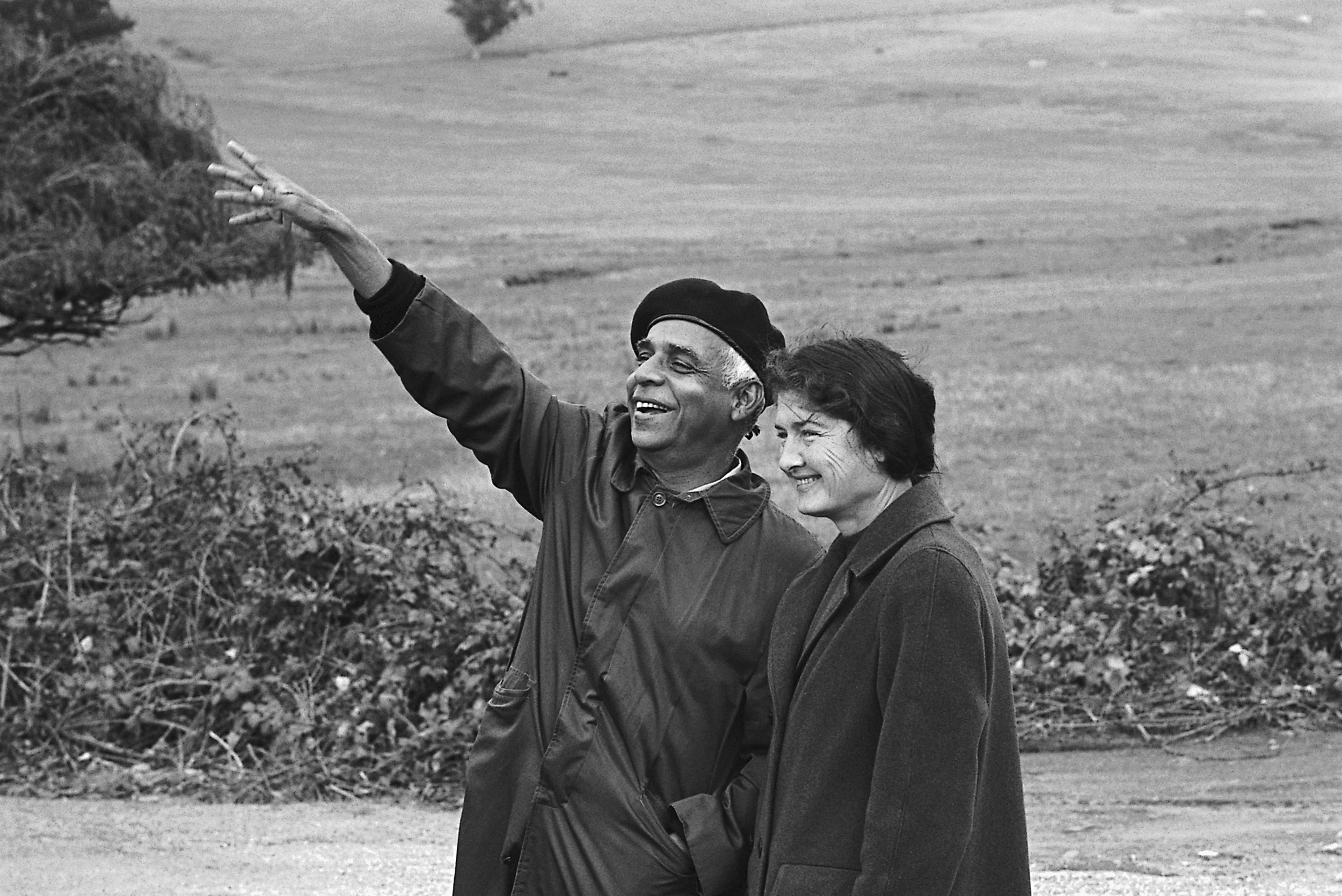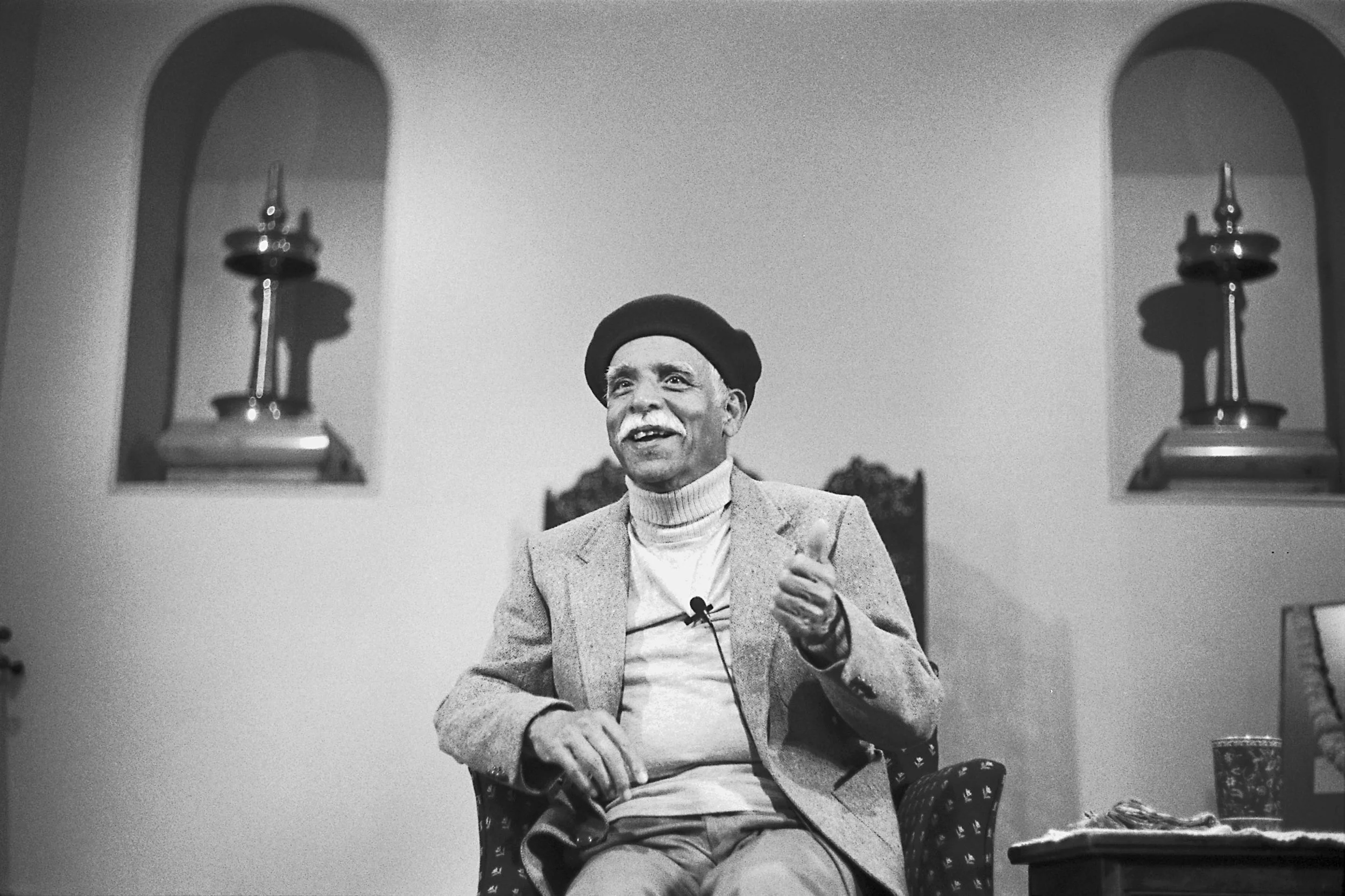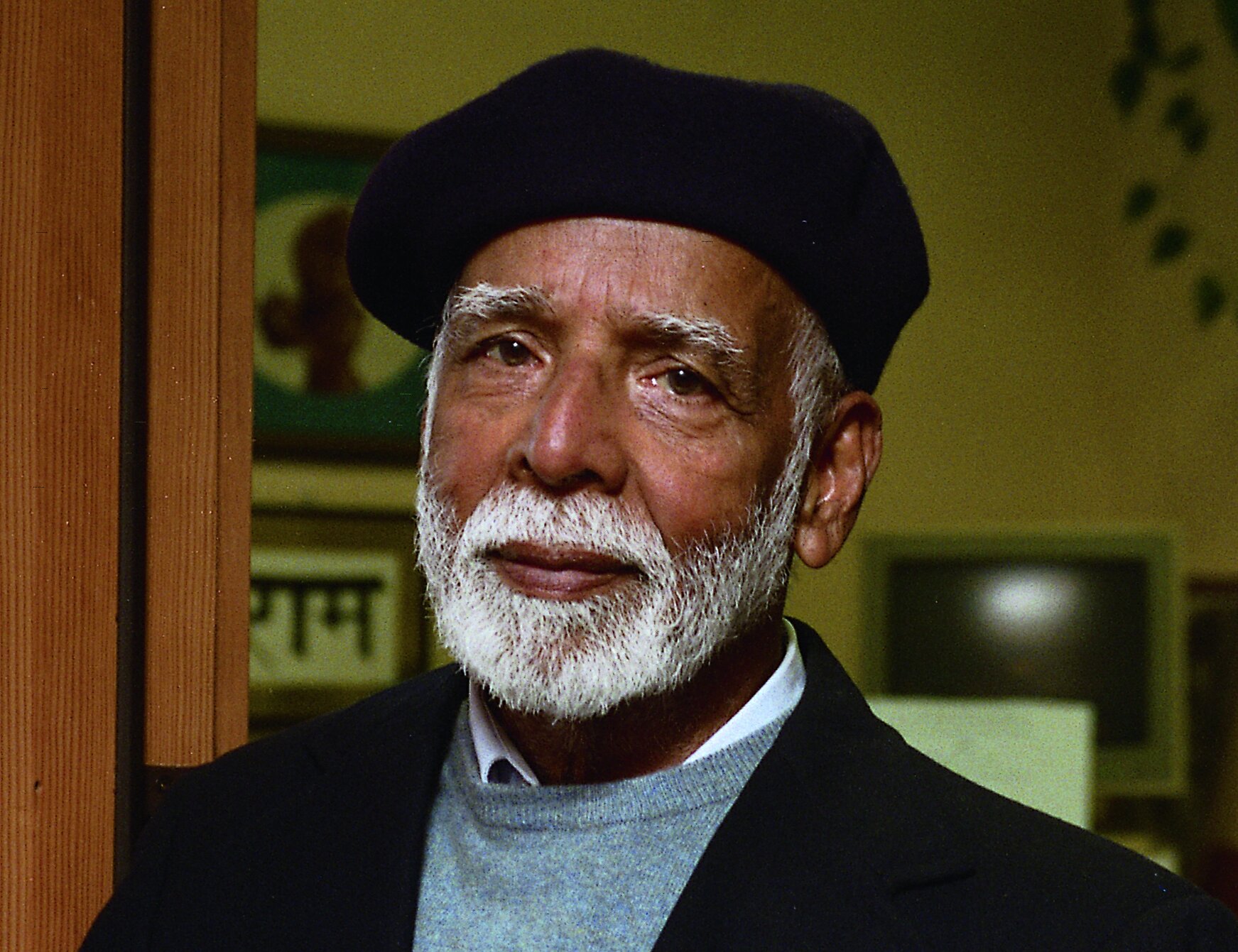“Most of us have grasshopper minds,” Easwaran writes in this week’s reading, “dispersing our attention, energy, and desires in all sorts of directions and depriving us of the power to draw upon our deeper, richer resources for creative living.”
Meditation is the solution to this dispersion: “Meditation is integration.” This integration is the key to using all our intelligence and creative faculties, the key to peace and happiness.
In this week’s essay, “The Path of Meditation,” Easwaran presents his eight-point program for realizing our potential. Let’s start by reading the first half, pages 127–131 in Climbing the Blue Mountain, in which he covers the first point, Meditation on a Passage.
“For what purpose am I here? Where am I going? What awaits me after death?” The Hound of Heaven is on the trail of every one of us, Easwaran writes, and these questions will not leave us alone. “Without answers to these questions, life has very little meaning.”
This week as we read pages 121–125 of Climbing the Blue Mountain, Easwaran leads us to take evolution into our hands by “[turning] inwards to discover the source of meaning and fulfillment right within yourself.” This discovery in turn embraces the whole of life and brings us home into the arms of the Lord.
Whether you like it or not, whether you know it or not, secretly nature seeks and hunts and tries to ferret out the track in which God may be found. – Meister Eckhart
With this epigraph Easwaran begins his essay “The Hound of Heaven,” in Climbing the Blue Mountain. The Hound cannot be evaded, and its chase may manifest as insistent questions about the meaning of life.
“It is a sure measure of the Lord’s love,” Easwaran tells us, “that whether or not we want to think about it, he will find ways to go on asking until finally we do hear. Many of the tragedies and reversals of life are special delivery letters sent straight from the Lord to our door, reminding us that other activities will bring us very little satisfaction until we discover why we are here.”
This week, let’s read the first half of this essay, from page 117 to the top of 121, ending with “…fulfillment right within yourself?”
Last week Easwaran shared how Granny used a stolen mango in his village school days to teach him about sakshi, one of the Thousand Names of Sri Krishna meaning “the internal witness.”
This week as we read pages 111–116 to finish his essay with that same title in Climbing the Blue Mountain, he narrates how Granny renewed the lesson when he was in high school by questioning him about rumors of his impoliteness to a neighbor’s sister. “What does it matter what his sister says?” Easwaran replies.
“‘What about yourself?’ she would ask. ‘Don’t you want the respect of yourself?’
‘Of course, Granny.’
‘Well, then,’ she would say, ‘you have to earn it.’”
The security that comes from gaining the respect of our own Self, Easwaran says, “cannot be shaken by anything on earth.”
"…Someone inside is watching everything, someone who never misses a thing,” Granny tells Easwaran in the story he uses to start this week’s essay, titled “The Internal Witness.”
This internal witness is our real Self, hidden by many layers of conditioning. “Our whole job in life is to remove these veils – that is, to overcome all the compulsive aspects of our surface personality.”
This week let’s read the first half of this essay, pages 105–111 in Climbing the Blue Mountain, ending with “…we are beginning to identify with our real Self.”
Easwaran describes an entry into the unconscious in this week’s reading, pages 98–104 of Climbing the Blue Mountain.* Last week he lead us past the exterior in this “house of the mind.” Now we explore the deepest and highest reaches.
Of course this represents the spiritual journey, on which he is indeed leading each of us. As we progress, “We know what we have to do. It will be terribly hard, but we need to get control of the very source of power in ourselves – get into the basement and wire all those dynamos together to harness the full power of our desires.”
The labor is monumental, but so are the benefits. We look forward to hearing your insights and reflections.
Like owners of an elegant Victorian home, many of us focus elaborate attention on the exterior: our appearance and surface pursuits. To find our divine core, however, “we cannot stay outside. We need to open the door of the Victorian house of the mind and go in.”
In this week’s essay from Climbing the Blue Mountain, Easwaran uses this “homely illustration” to help us remember an eternal truth: “that by whatever name we call him, the Lord of Love is always present in the depths of our consciousness. Nothing we do can displease him. And human life has one single purpose: to discover this divine Self through the practice of spiritual disciplines, of which the foremost is meditation.”
This week let’s read the first half of “The House of the Mind,” pages 93–98, ending with “…impossible to go at all.”


















